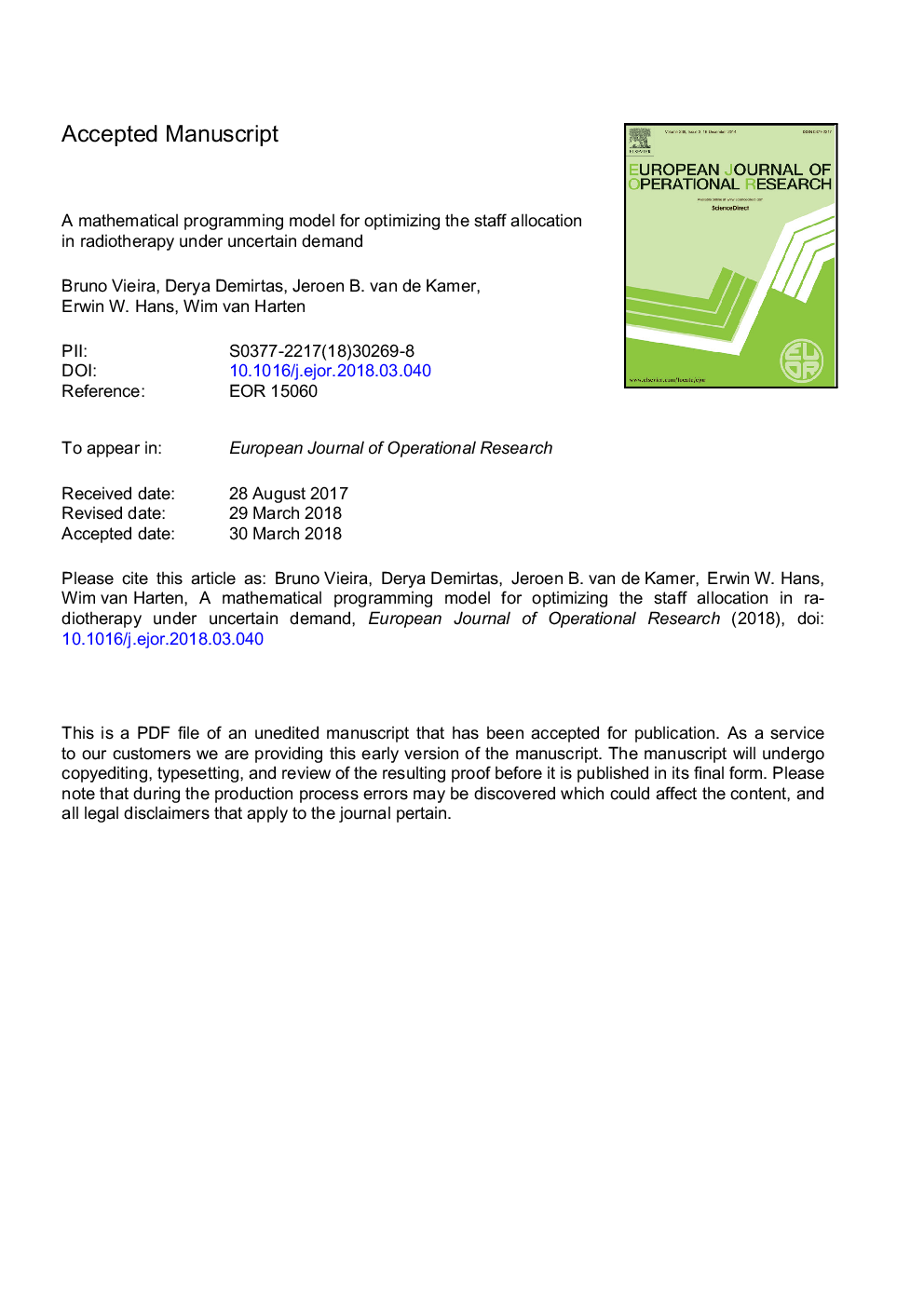| Article ID | Journal | Published Year | Pages | File Type |
|---|---|---|---|---|
| 6894600 | European Journal of Operational Research | 2018 | 32 Pages |
Abstract
As the number of people diagnosed with cancer increases, demand for radiotherapy (RT) services has been continuously growing. In RT, delays in the start of treatment have shown to increase the risk of tumor progression in various cancer types, and patients experience greater psychological distress when subject to longer waiting times. The RT process, which involves imaging and treatment planning before treatment, is subject to complexities that hamper resource planning and control. On the demand side, the amount of workload in each operation depends on the highly variable patient inflow. On the supply side, radiation therapy technologists (RTTs) have multiple skills, rotation needs and partial availability, which makes the allocation of RTTs a complex task that often leads to situations of understaffing, jeopardizing the fulfillment of the patients' waiting time standards. In this paper, we propose a stochastic mixed-integer linear programming model that optimizes the allocation of RTTs to multiple operations in RT over a set of scenarios of patient inflow. The scenarios are generated from historical patient data, and the final RTT allocation covers the workload associated with all scenarios. The goal is to maximize the (expected) number of patients completing pre-treatment within the waiting time target. Results for a case study in the RT department of the Netherlands Cancer Institute show that, on average, the number of patients able to start treatment within the maximum waiting time standards may increase from 91.3% to 97.9% for subacute patients, and from 96.3% to 100.0% for regular patients.
Related Topics
Physical Sciences and Engineering
Computer Science
Computer Science (General)
Authors
Bruno Vieira, Derya Demirtas, Jeroen B. van de Kamer, Erwin W. Hans, Wim van Harten,
